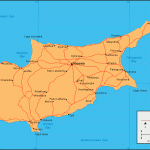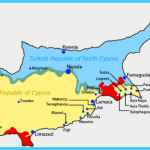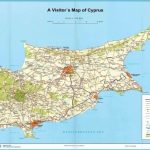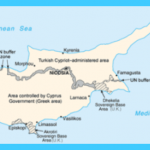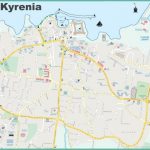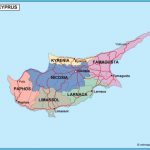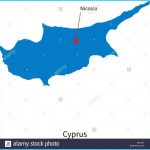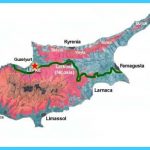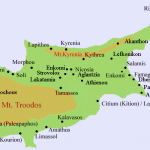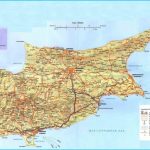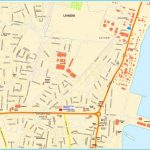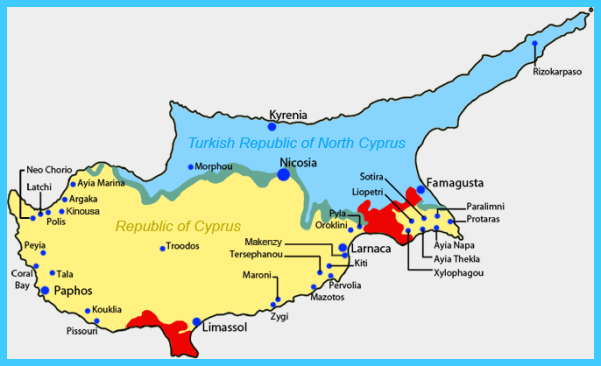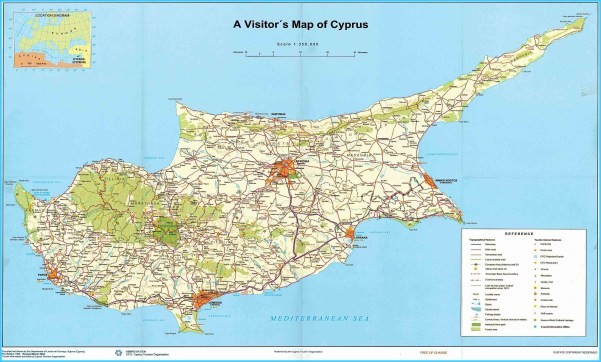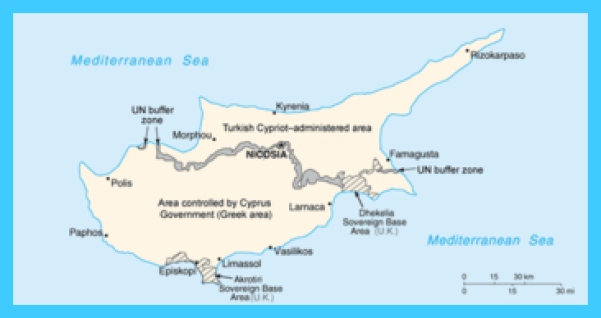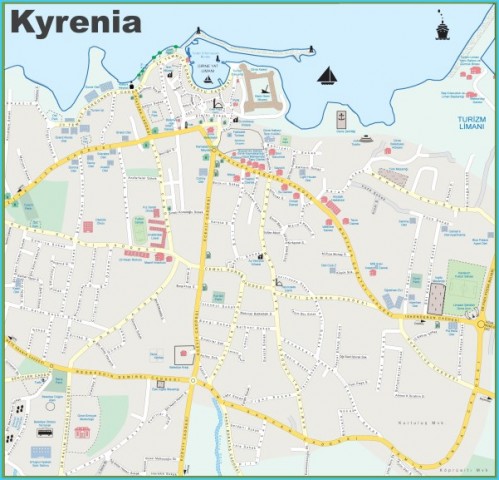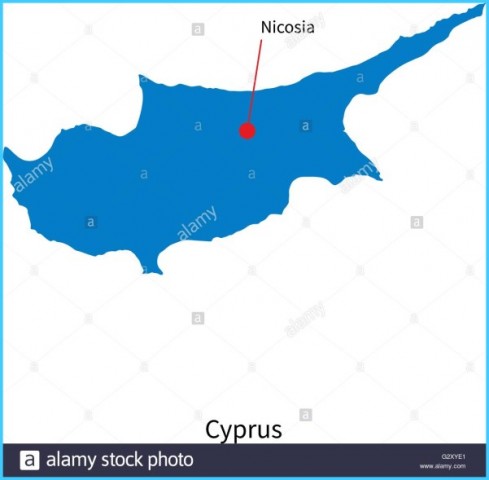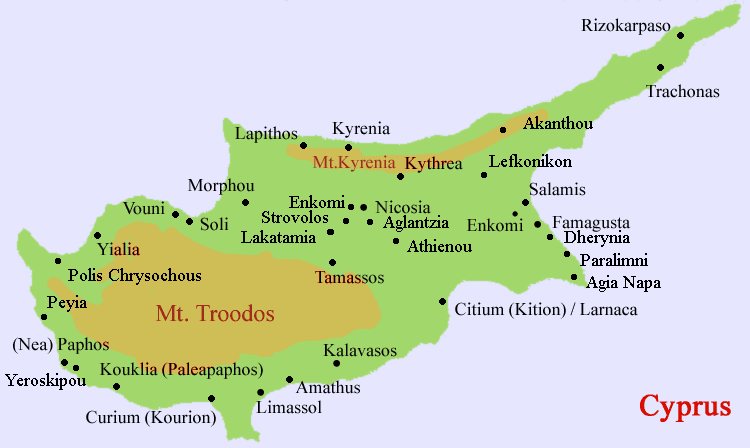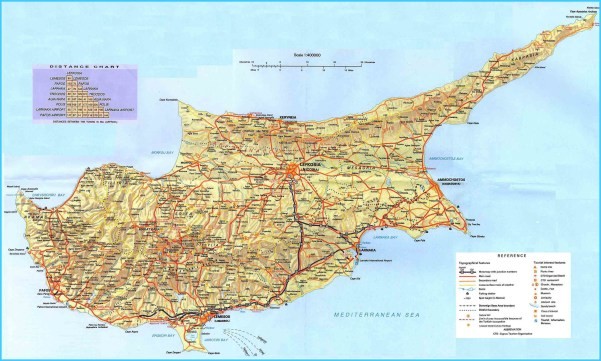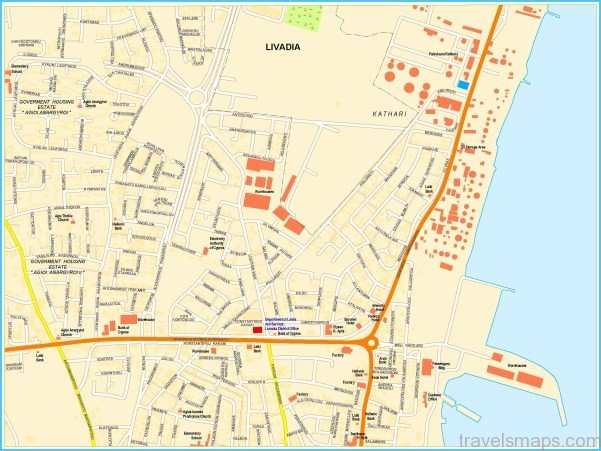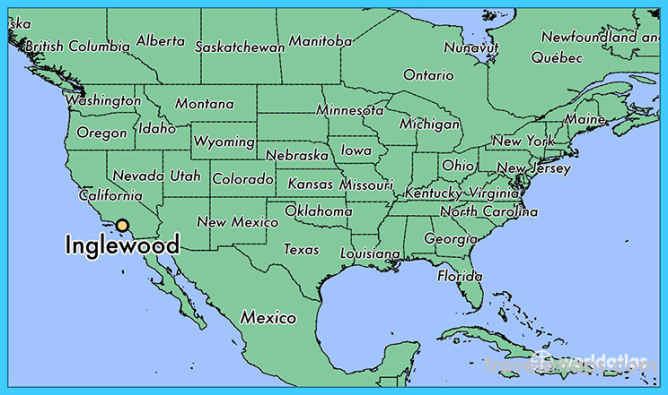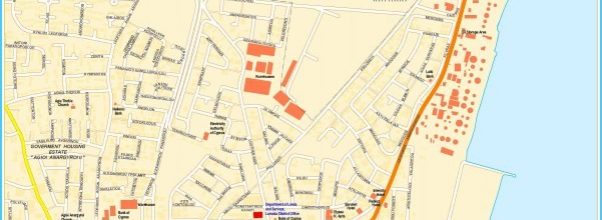
Entrance to the Monastery of Kykkos
Finally the Byzantine Emperor agreed to give the true icon of Virgin Mary, demanded by Isaias, in order to save his daughter. Thus, the icon of Eleousa, as it is known, found itself in Kykko and the first monastery was built. Though the monastery was burned several times, in 1365, in 1541, in 1751 and in 1813, the miraculous icon was saved. The icon for centuries has been considered too sacred to gaze upon, and is silver-covered since 1576. Next to the icon is a bronze arm which belongs to an infidel, who was punished because he tried to light a cigarette from one of the candles facing the Virgin. Furthermore, the icon enjoys a great reputation among Cypriots as rain bearing. Currently, the monastery has been renovated, the rooms provided to the pilgrims contain all amenities and the three-aisled church, besides its impressive iconostasis, is decorated with frescoes. The frescoes have been extended even outside the church. The library of the monastery is rich with very old ecclesiastical blogs and manuscripts. The recently inaugurated Kykkos Museum is very imposing, contributing to the intellectual and cultural life of Cyprus and preserving works of art as old as 900 years ago. The museum comprises many priceless relics, like carved ivory plaques, reliquaries, silver boxes, gospels, carved wooden crosses, mitres, etc. Kykko monastery played a significant role in the Liberation Struggle of Cyprus (1955-59), by offering all facilities, particularly communication and supplies to the fighters of the EOKA movement, including their leader, G. Grivas, who at a time had his headquarters close by. The monastery operates the Seminary (Training College for Priests) centered in Nicosia and is currently running the Center of Studies of Kykko Monastery at the annex of Archangelos Michail in Nicosia. Also, the Kykko monastery restored the Monastery of the Priests in Pafos, while its donations to schools, organizations and churches are numerous. Visitors are welcome to stay at the monastery and rooms are provided for them. At Kykkos monastery the visitor can buy local wines, ouzo and red zivania (a unique cypriot alcoholic drink).
Cyprus City Map Photo Gallery
Monastery of Kykkos
Visitors to Kykkos monastery can also visit: (a) Vrysi. A few hundred metres south-west of the monastery lies the recently restored (1984) “Vrysi” (spring), gushing forth cool water. It stands close to a modern building offering all facilities to excursionists, including restaurant, cafe, barbecue, children’s entertainment, etc. (b) Paradeisi. Close to Vrysi and about 3km from the monastery lies Paradeisi (Paradise place) which is a narrow valley with plenty of water. The restored church of Agios Andreas, originally built in 1700, has a gilted iconostasis, and among others it exhibits the signature of Barsky, the Russian monk, who visited the church in 1735. (c) Throni. Throni is the highest peak, close to the monastery, where in the past a wooden throne stood, on which the icon of Virgin Mary was placed during periods of protracted droughts, followed by prayers. Recently the wooden seat has been replaced by a modern impressive structure. The view from this point is boundless. Close by lies the tomb of late Archbishop Makarios and the first President of the Republic of Cyprus, who died in 1977. The burial place was chosen by Makarios himself while alive. Here in the monastery of Kykko, Makarios entered as a novice, and it is the monastery that undertook his secondary as well as his university education. His nativevillage, Panagia, is not far away.
Cyprus Border Map
Kykkos “Throni”
A visit to Throni is a must for everyone visiting this area. The visitor to Kykkos Monastery might like to taste and buy white or red zivania and the wine produced at the monastery’s winery. Mylikouri. It lies south-east of Kykkos monastery and is the closest settlement to the monastery. The production of zivania (local alcohol), wine, soutzoukos (sweet made from grape juice and almonds), the planting of climbing vines in front of the houses and the employment in the neighbouring monastery are some non-agricultural activities. Recently, the inhabitants have converted the local school into a guest-house. Krya Vrysi is a delightful spot to enjoy cool weather in summer, to gossip with the locals and enjoy the melodious singing of the nightingale. Tsakistra is the village the traveller meets on his way from Kykkos to Kampos. The inhabitants invented many ways to increase their income, like the preparation of soutzoukos (sweet made of grape juice and almonds), the cultivation of roses along the boundaries of vineyards, charcoal-making, fire-brick manufacturing and particularly lumbering. A few sawmills function in the village. Most probably Tsakistra was an annex to the Kykkos monastery with a long, narrow building where monks stayed while working in Tsakistra, still existing. Kampos, 6km north of Kykkos, cannot communicate with Nicosia via Xeros and Morfou, as before the Turkish invasion (1974). Lumbering and the presence of several saw-mills offer employment to a large number of inhabitants. Some traditional houses, particularly in the compact sector of the settlement, are adapted to the environment, with a significant part of their structure made of timber. The three-aisled, timber-roofed church of Agios Kyriakos, probably very old, was restored in 1881. Its iconostasis is made of walnut, while some of its portable icons are a few centuries old, most probably collected from chapels long abandoned, or from the dissolved monastery of Panagia ton Iliakon. A small guest house operates in the village, lying close to the square of the village.
Maybe You Like Them Too
- The Best Places To Visit In North America For Christmas
- Faro Travel Guide: Map of Faro
- Mumbai Travel Guide For Tourists: Map Of Mumbai
- Travel to Budapest
- Thailand Travel Guide for Tourists: The Ultimate Thailand Map

